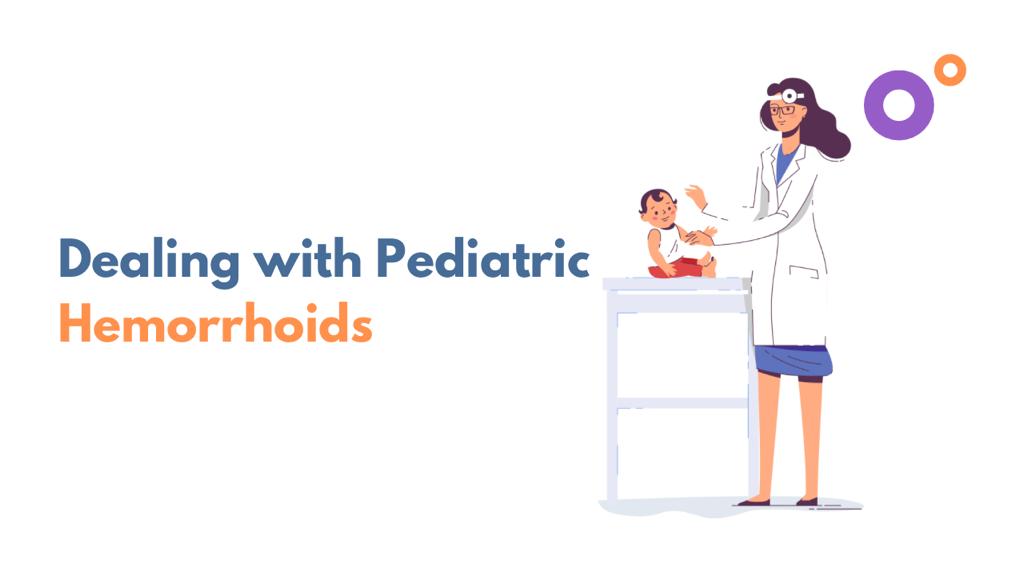
Dealing with Pediatric Hemorrhoids
Medically reviewed by
Dr Anubhav Sangwan
MBBS, MS -
Surgeon, Proctologist
Hemorrhoids in babies aren’t common, but they can happen due to constipation or chronic liver failure. Rectal bleeding is the most common sign. Hemorrhoids, often called piles, are swollen veins in the anus and lower rectum resembling varicose veins. This is not life-threatening but can be extremely painful and bothersome.
Infants may develop constipation when they transition from breast milk to solid foods or may be due to inadequate fiber and fluid intake or from anxiety about having bowel movements and potty training.
Types of hemorrhoids
Hemorrhoids can be Internal or external. Internal hemorrhoids occur when the veins inside the anal canal are swollen and external hemorrhoids occur when the veins near the anus are swollen.
Signs and symptoms of hemorrhoids are:
● Painless bleeding while passing stool.
● Persistent itching in the anal area.
● Rectal or anal pains as children complain of pain when cleaning after a bowel movement.
● Mucus and stool on toilet paper without bowel movement may indicate bulging internal hemorrhoids.
● In external hemorrhoids, hard, painful lump and clot are seen under the skin.
Complications of Hemorrhoids
Anemia may occur due to blood loss. A thrombosed hemorrhoid is not life threatening but can be extremely painful and require intervention. This Strangulated hemorrhoid is when the blood supply to the internal hemorrhoid is cut off, causing extreme pain.
Prevent Hemorrhoids
The following may prevent or reduce the symptoms of hemorrhoids.
● A high-fiber diet of vegetables, fruits and whole grains helps soften the stool.
● Adequate hydration prevents hardening of the stool.
● Avoid sitting on the toilet for a longer duration as this increases pressure on anal veins.
● Do not delay in passing the stool as it hardens if the bowel movement is delayed.
● In external hemorrhoids, hard, painful lump and clot are seen under the skin.
Diagnosis of Hemorrhoids
Health history and physical examination diagnoses hemorrhoids in children. Usually, the physical examination is enough. Internal hemorrhoids are diagnosed using proctoscopy or anoscopy to visualize the rectum. Doctors may also call for sigmoidoscopy or colonoscopy to understand other reasons for rectal bleeding. The lumens of bowels are visualized using a flexible tube with a camera and light.
Treatment for Hemorrhoids
Minimally invasive procedures can cure a constantly painful and bleeding hemorrhoid. Like Rubber band ligation involves placing tiny rubber bands at the base of internal hemorrhoids to restrict the blood supply.
Coagulation techniques uses heat from infrared, bipolar or laser sources to control internal bleeding. Sclerotherapy is performed by injecting chemical solutions to shrink the tissue of the hemorrhoid. Hemorrhoid thrombectomy surgically removes the external hemorrhoid under local anesthesia.
Complicated large hemorrhoids need surgical procedures like:
Hemorrhoidectomy is the surgical removal of hemorrhoids.
Stapled hemorrhoidopexy blocks the blood supply to the internal hemorrhoids.
Visit the doctor
If your child can’t have a bowel movement, has fever or anal bleeding.